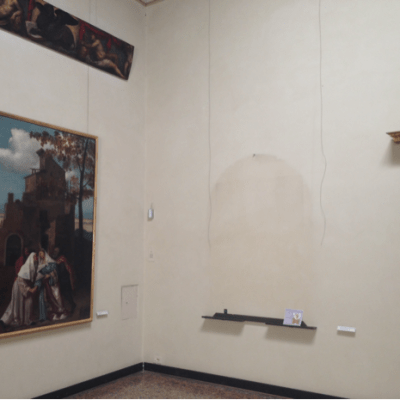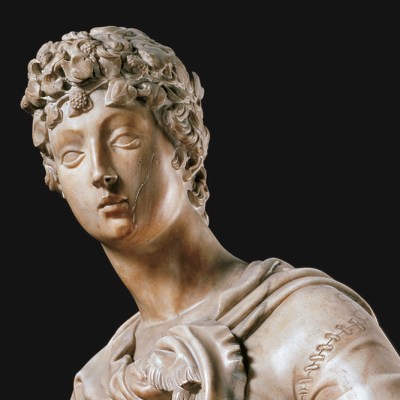From the February 2024 issue of Apollo. Preview and subscribe here.
One of the largest museums in Italy is the Museo di Capodimonte, a claret-coloured Bourbon palazzo overlooking the city of Naples. Originally a hunting lodge, the palace is surrounded by 134 hectares of park and woodland called the Real Bosco di Capodimonte, which is around three times the size of the Boboli Gardens in Florence.
When the French art historian Sylvain Bellenger took up the post of director in 2015, the vast collection of the Capodimonte, which spans a period from the 12th to the 20th century and includes an armoury, porcelain, sculpture, photography, a large collection of drawings, and paintings from the Farnese collection, had only five art historians. They have all since retired, with only one being replaced – and their knowledge of the collection subsequently lost. ‘A museum like Capodimonte, one of the large European cultural institutions, currently has only one art historian for 49,000 works of art,’ Bellenger says.
He estimates that the Capodimonte cultural park is functioning with 75 per cent fewer staff than it should have. This is because of Italy’s public sector hiring system, in which hundreds of people sit national civil service exams for the generic position of art official, after which they are distributed to cultural sites around the country, without their specialisations being taken into account.
The Capodimonte Museum in Naples sits in 134 hectares of park and woodland. Photo: Laura Di Biase/Alamy Stock Photo
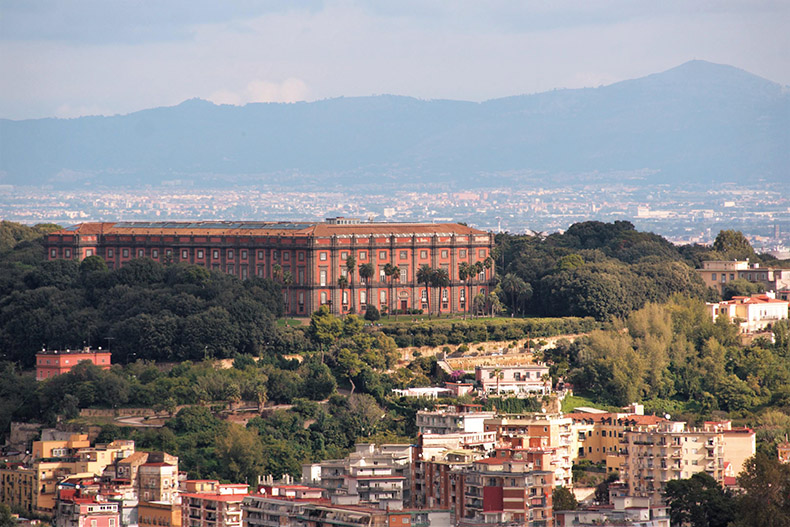
James Bradburne, the British-Canadian curator whose time at the Pinacoteca di Brera in Milan ended in October 2023, describes the system as the country’s Achilles heel. ‘It is unlike any other management system I’ve ever been in,’ he says. ‘You can’t put the right person in the right place at the right time and then reward them at the right level for what they’re doing. It is completely dysfunctional.’ The effect of the national concorso system is that successful applicants may be placed somewhere geographically inconvenient or at odds with their own expertise. ‘You may have a collection of Renaissance art and you are sent a curator that specialises in performance art from the 1960s,’ Bradburne continues, offering a musical metaphor in illustration: ‘Imagine I am running a state orchestra. I want to play Beethoven, and I have been sent incredible musicians, but I need three timpanists. Instead, I have 25 tuba players, three bassoonists and one cellist. There’s no way I can possibly play Beethoven!’ Museums can try and patch over the gaps by handing out short-term contracts for temporary exhibitions, but it stretches budgets in a country where state museums operate primarily through government funding.
The staffing issue exists across all departments and levels of a museum’s hierarchy. Bradburne recalls that when he was at the Brera, they couldn’t get enough museum guards. ‘The problem is that people were retiring, and we couldn’t replace them – we had to wait for the state to rehire. When someone leaves, that doesn’t give you a salary that you can redeploy, it just means that you are doing the same work with fewer staff.’ Sylvain Bellenger puts it simply: ‘We are generals without an army.’
While Italy’s HR problem applies as much to museum guards or curators as it does to museum directors, international attention has focused on what it means when the top job changes, as in the latest round of director appointments for a selection of public museums, which were announced in December last year. The appointment of right-wing journalist Pietrangelo Buttafuoco as president of the Venice Biennale in October caused a stir in the art world. Although Buttafuoco writes for papers on both sides of the left/right divide, he was also the national leader of the youth wing of the neo-fascist party Italian Social Movement, which merged with Silvio Berlusconi’s People of Freedom party in 2009; Buttafuoco has written a book in praise of Berlusconi. His appointment was seen as a sign of domestic far-right politics contaminating one of the most influential cultural roles on the global art scene. When the news came out, Raffaele Speranzon, deputy parliamentary leader of Giorgia Meloni’s Brothers of Italy party, told Italian daily La Stampa that the Biennale Foundation was a left-wing ‘fiefdom’ and that Buttafuoco’s appointment was a symbol of the ‘change of direction that the Meloni government wants to stamp into every cultural centre in the nation’.
If Meloni does want to leave her mark on the country’s cultural institutions, hers wouldn’t be the first government to do so. The appointment of museum directors has always been handled centrally by Rome, but the difference between the Italian system and that of other countries in Europe is not as wide as many think. In France, for example, while many managers for smaller museums are recruited out of university programmes that train their students in heritage protection, art conservation and museum management, the directors of France’s most important institutions such as the Musée d’Orsay, the Pompidou Centre and the Louvre are anointed by the president himself, in a somewhat regal flourish. In the UK, it is often the board of trustees that chooses a director – but to take the British Museum as an extreme example, the king chooses one of the trustees, in a literal regal flourish, while 15 others are appointed by the prime minister. In fact, in Italy, the government’s control over who has the top jobs in the cultural sector was actually diminished by reforms promulgated by former culture minister Dario Franceschini in 2015, under Matteo Renzi’s government.
The Franceschini reforms dismantled the old world order and created a new one, sweeping away a cohort of museum directors and advertising for new ones in their place. It was the first time the national competition had been opened up to international applicants, with an advert even placed in the Economist. A second element of the reforms was the granting of the euphemistic ‘special autonomy’ to 20 museums. This new status gave museums more control over how to use the budget they were given by the government, as well as over the exhibitions, curatorial programme and visitor experience. The blind spot was human resources, as it continues to be today – what Bellenger calls ‘the biggest limitation of the Franceschini reform’. This is the cut and thrust of Italy’s cultural sector: major reforms can happen suddenly and often, depending on the vicissitudes of Italy’s turbulent political scene.
‘It is so linked to politics. The moment that the government changes, senior management in the culture sector changes with short notice,’ explains Ilaria Puri Purini, an Italian curator and art historian who recently returned to Italy to take up the post of director of the American Academy in Rome, after working in London for 14 years. ‘It creates a lot of instability in the programme and life and health of an institution.’
The Pinacoteca di Brera in Milan was run by the British-Canadian art historian James Bradburne from 2015–23. Photo: Mattes Renz/Hemis/Alamy Stock Photo
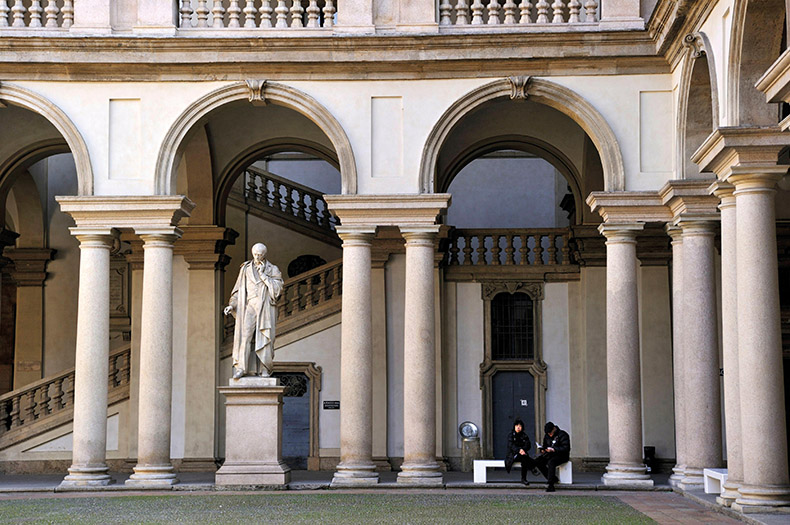
When Bradburne arrived at the Pinacoteca di Brera in 2015, he likened the museum to a ‘council flat’ – a place that had changed hands so often, ‘it didn’t feel like it had had a single owner that had loved it for a long while.’ Bradburne ended up being that owner, staying in the job for eight years.
That sense of instability was particularly apparent in 2019, when Cecilie Hollberg, director of the Galleria dell’Accademia in Florence, lost her job abruptly in August, just three months before the end of her contract. The then-culture minister under the right-wing Five Star Movement and League unity government, Alberto Bonisoli, had decided to enact his own reform – effectively reforming the Franceschini reforms of four years earlier. He wanted to take away the Accademia’s autonomous status and merge it with the Uffizi. But the government changed yet again and by September Bonisoli was out of a job, replaced – ironically – by his predecessor, Franceschini. Six months later, Hollberg was back in her office in the Accademia. ‘Working in Italy has been… quite an adventure,’ she says drily.
Politics undeniably affects the art world. But the question in Italy is to what extent that is the case – and is it only attracting attention now because of the current government’s position on the political spectrum? The culture minister Gennaro Sangiuliano has said that nationality has no impact on hiring for the top jobs, but the people that he surrounds himself with, such as undersecretary to culture Vittorio Sgarbi, indicate otherwise. Sgarbi, a right-wing art historian and journalist who is currently under investigation for allegedly owning a stolen painting, famously said in 2015 that appointing foreign-born directors to run Italy’s museums was a ‘slap in the face’ for Italians. Sgarbi’s opinions have apparently not changed since. He complained in August 2023, ‘Why do I have to put a foreign director in the Uffizi? Have you ever seen a foreigner in the Louvre?’
Italians are common in senior curatorial positions outside of Italy, however. When they return to Italy, like Ilaria Puri Purini, they bring back with them ideas and ways of working drawn from their international experience. ‘It would have been impossible for me to have had the career I’ve had, inside Italy,’ Puri Purini says. ‘One thing that is challenging for Italy is its past – it’s more difficult to move forward because you can’t help looking backwards. Art in Italy is stuck either in the 1960s, with Arte Povera, or with its antiquities…’
Arturo Galansino worked at the Louvre and the Royal Academy of Arts in London before returning to Italy in 2015 to be director of the Palazzo Strozzi in Florence. He was drawn to the job because of Strozzi’s unique – to Italy – public and private funding model, which, he says, gives it more curatorial freedom than publicly funded museums. ‘It means we rely on the success of our exhibitions,’ he said, ‘and is why we’re not afraid to touch on very sensitive topics, like migration and climate change.’ He’s overseen blockbuster solo shows from contemporary artists such as Marina Abramovic, Ai Weiwei and Anish Kapoor.
Although the recent list of nominations skews towards Italian applicants, Eike Schmidt, the German-born director of the Uffizi who has just been announced as Bellenger’s replacement at the Capodimonte, says that there’s no whiff of anti-foreigner bias. ‘There are no grounds to say that – in fact the opposite happened!’ he protests, mentioning the Italian art historian Simone Verde’s extensive experience in France and the British and Italian nationality of Thomas Clement Salomon, who has taken over at the Galleria Nazionale d’Arte Antica in Rome.
After running the Uffizi Galleries in Florence since 2015, the German-born art historian Eike Schmidt, who is now an Italian citizen, was appointed in December 2023 as director of the Museo e Real Bosco di Capodimonte in Naples. Photo: Roberto Serra – Iguana Press/Getty Images
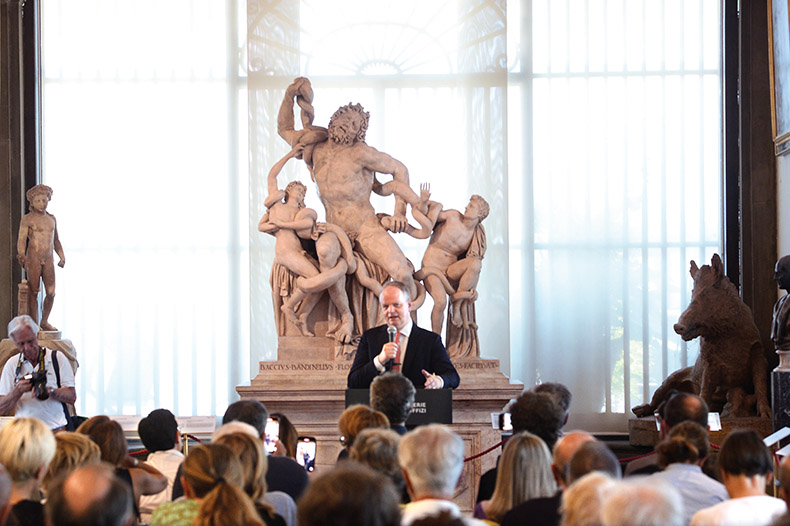
Bellenger has a slightly more nuanced opinion, saying that the only people who could be considered ‘foreigners’ in this round were already working in the system. He thinks it’s vital for Italian museums to bring in people with external experience – whether Italian or foreign. ‘Italy is one of the countries in Europe that struggles with this idea of the management of its history and heritage being handed over to foreigners. Even though we know very well that the best specialists in Italian art or French art are not necessarily Italian or French themselves.’ He also has some pointed remarks about Schmidt’s nomination – although makes pains to make clear that he had no doubts about his competence for the role – saying, ‘The Uffizi director has expressed his political closeness with the government so strongly that he is a centre-right candidate to be mayor of Florence. Everything is connected.’
Schmidt has been flirting with the idea of running for mayor after obtaining Italian nationality last year. He started considering it when, upon learning he would not be allowed a third mandate, Florentines ‘stopped [him] on the street and asked [him] to jump ship from the Uffizi to the neighbouring Palazzo Vecchio’. Despite having accepted the job as director of the Capodimonte about 500 kilometres away from Florence, at the time of writing he had not yet ‘discarded’ the idea. He’s made last-minute decisions before – in 2019 he ruffled a lot of feathers by cancelling a planned move to run the Kunsthistorisches Museum in Vienna just weeks before he was due to take up the post, deciding to stay at the Uffizi instead.
Sgarbi last year prophesied that the era of international directors was over, and that the outgoing batch ‘would not leave a trace’. Unfortunately for him, Schmidt at the Uffizi, Bradburne at the Pinacoteca di Brera, Hollberg at the Galleria dell’Accademia and Bellenger at the Capodimonte have not only left a trace, but have also steered a veritable revolution in museum management in Italy – so much so that locals don’t want them to leave. Almost 3,000 people signed a petition last year calling on the Ministry of Culture to let Bellenger stay in his job until 2025 and finish the ambitious renovation project he began, which, the petition says, ‘changed the face of Capodimonte’ and restored the park to its former beauty. Bradburne admits, sounding almost embarrassed by the attention: ‘Once the word got out that I was going, I was very moved by people stopping their cars and opening their windows to say thank you to me.’ He doesn’t have Italian citizenship, so can’t run for Milan’s mayor, but even if he could, he wouldn’t, he says. ‘I’m just a gardener. I’m not a politician. My job is to help things grow.’
From the February 2024 issue of Apollo. Preview and subscribe here.
9 February: Since the publication of this piece, Vittorio Sgarbi, the undersecretary of culture under investigation, announced his resignation with immediate effect on 6 February, but is still in post.
